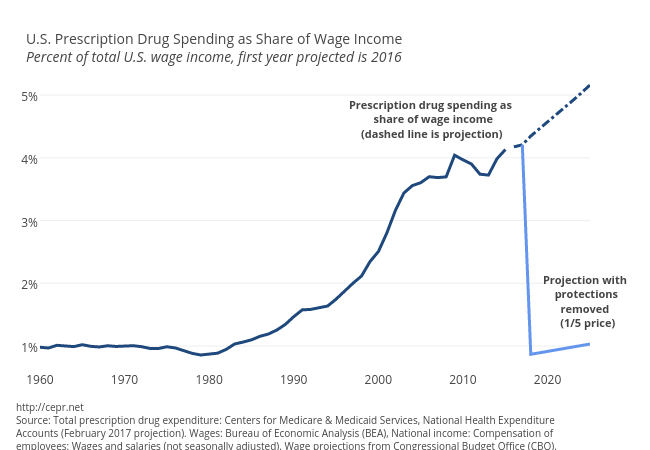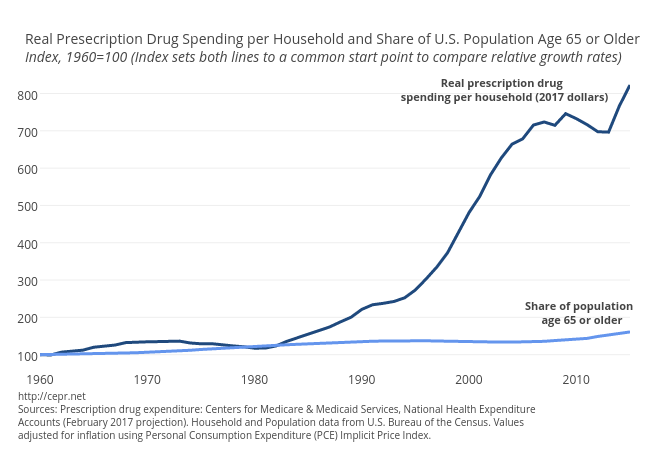June 27, 2017
Prescription drugs are a large and growing share of national income. While it is generally recognized that drugs are expensive, many people are unaware of how large a share of their income goes to paying for drugs because much of it goes through third party payers, specifically insurance companies and the government.
The Centers for Medicare & Medicaid Services (CMS) produce projections of national expenditures on prescription drugs through 2025, along with historical estimates dating back to 1960. As shown below, prescription drug spending from 1960 to 1980 was equivalent to about one percent of total wage and salary income. In the years leading up to the passage of the Bayh-Dole act in 1980, wage income was rising faster than spending on prescription drugs. As a result, the share of wages spent on prescription drugs was actually falling, reaching a low in 1979 of 0.86%.
However, after 1980, prescription drug spending rose rapidly relative to wage income. The ratio of drug spending to wages rose each year from 1980 to 2007. In 2007 wage growth finally outpaced drug expenditures, with the ratio again increasing in the Great Recession. By 2010, prescription drug spending had climbed above four percent of wage income.
The three percent of annual wage income lost to higher drug spending over the past 40 years makes a big difference to working individuals and families. This increase in annual spending averages out to roughly $2,400 per household. CMS projections, combined with projections on wage income growth from the Congressional Budget Office, suggest that spending on prescription drugs will increase further through 2025. This ratio is expected to exceed five percent by 2024.
While an aging population has been a factor increasing spending on drugs, demographics alone cannot explain the sharp increase in prescription drug spending. Inflation-adjusted prescription drug spending per household has increased more than eightfold since 1980, far outpacing any demographic trend surrounding age. The share of people over age 65 in the population has increased from 9.2% in 1960 to 14.8% in 2015. This can at most explain a small part of the increase in spending on drugs over this period.
It is important to recognize that the high cost of drugs is the result of a conscious policy decision to give drug companies monopolies in the form of patents and other forms of exclusive marketing rights. Without these protections drugs would almost invariably be cheap, likely costing on average less than one fifth as much as they do now. Even worse, the perverse incentives resulting from patent monopolies distort the research process and can lead drug companies to misrepresent evidence on the safety and effectiveness of their drugs.








